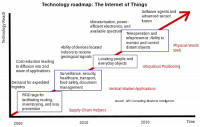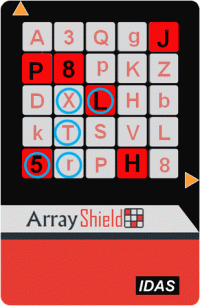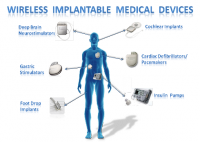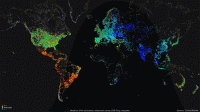-
Detecting hidden malicious ads hidden in apps
The danger of acquiring a computer virus or spyware used to come with the risk of visiting the dark, sketchy corners of the Internet. But now trusted and harmless smartphone apps like MyFitnessPal and Candy Crush carry their own risks. As more and more people own smartphones, the number of malicious ads hidden in apps is growing — tripling in just the past year.
-
-
Sharing password data safely to bolster cybersecurity
An unfortunate reality for cybersecurity researchers is that real-world data for their research too often comes via a security breach. Now computer scientists have devised a way to let organizations share statistics about their users’ passwords without putting those same customers at risk of being hacked.
-
-
Russian govt. behind attack on Ukraine power grid: U.S. officials
Obama officials said that Russian hackers were behind a December 2015 cyberattack on Ukraine’s power grid. The attack caused power outages and blackouts in 103 cities and towns across Ukraine. Elizabeth Sherwood-Randall, deputy Energy Secretary, made the comments to a gathering of electric power grid industry executives.
-
-
Intelligence agencies could use Internet-of-things to spy on people

James Clapper, the director of U.S. national intelligence, told lawmakers the other day that the Internet of things — baby monitors, TV set, home security devices, voice recognition dolls – may be used by intelligence services to spy on people. Clapper, testifying yesterday before a Senate panel, said that intelligence agencies might be able to use this new generation of household devices to increase their surveillance capabilities.
-
-
U.S. officials: DHS, DOJ hack not serious
Informed U.S. officials have downplayed the impact of the latest breach of government data in the wake of a hack of the employee information of 29,000 Department of Justice and DHS staff. Unidentified hackers on Sunday claimed that they had stolen personal information of about 20,000 DoJ employees — including FBI officials — and 9,000 DHS employees. Observers note that while the DHS breach is less severe than the one at OPM, it is still embarrassing for a department designated as the point of entry for all corporate data shared with government agencies in the information sharing program between industry and government created last year by the Cybersecurity Information Sharing Act.
-
-
Vulnerability found in in two-factor authentication

Two-factor authentication is a computer security measure used by major online service providers to protect the identify of users in the event of a password loss. Security experts have long endorsed two-factor authentication as an effective safeguard against password attacks. But what if two-factor authentication could be cracked not by computer engineering but by social engineering?
-
-
Hyperion cyber security technology receives commercialization award
The commercial licensing of a cybersecurity technology developed at the Department of Energy’s Oak Ridge National Laboratory has been recognized by the Federal Laboratory Consortium for Technology Transfer (FLC) as a good example of moving technology to the marketplace. Hyperion, which has the capability automatically to analyze executable programs and recognize behaviors that signal malicious intent and vulnerabilities, was licensed to Virginia-based R&K Cyber Solutions, LLC, in late 2014.
-
-
Realistic data needed to develop the 21st century power grid

Say you have a great new theory or technology to improve the nation’s energy backbone — the electric grid. Would it not be great to test it against a model complete with details that would tell you how your ideas would work? But it is a challenge, because existing sets of data are too small or outdated; and you do not have access to real data from the grid because of security and privacy issues. To overcome this problem, is helping to create open-access power grid datasets for researchers and industry.
-
-
Building cyber security testbed to help protect the power grid
It is easy to think of the electrical grid as the power plants, the high voltage lines, the transmission towers, the substations, and all the low-voltage distribution lines that bring power to our homes and businesses. An attack on that grid would involve getting out and cutting lines or dropping towers. But there is another, less visible piece to the grid — all the computers and communication networks that make it work. Attackers can go after the cyber grid, too. They can do it from a desktop. At no real cost. Potentially from anywhere in the world. With few if any clues left behind.
-
-
NIST seeks vendors to help secure wireless medical devices

Medical devices such as the infusion pumps that deliver medication intravenously were once standalone instruments that interacted only with the patient. Today, they have operating systems and communications hardware that allow them to connect to other devices and networks. While this technology has created more powerful tools and the potential for improved patient care, it also creates new safety and security risks.
-
-
Researchers use advanced algorithms to identify six botnets

Ben-Gurion University of the Negev (BGU) cyber security researchers have discovered and traced approximately six “botnets” by analyzing data collected from past cyberattacks. Botnets are networks of malicious, remotely updatable code that covertly lurk on infected computers.
-
-
Navigations systems are vulnerable to hackers
When it comes to route planning, drivers have almost blind faith in GPS. The technology plays an important role in identifying location and time in other areas, too. If hackers attack the system, they can cause great damage. Information security researches look to develop defensive measures.
-
-
Using unpredictability to defend computers from cyberattacks
We want our computers to perform the way we expect. But what if the key to defeating malware is introducing a bit of chaos? Researchers think a bit of unpredictability could help outsmart malware. This is the logic behind Chameleon, the operating system they are developing. In Chameleon, which is still in the conceptual phase, unknown programs that could be malware run in a special “unpredictable” environment, where the OS intentionally introduces some unpredictability to the way they operate.
-
-
Intel unveils new security-on-a-chip system
Intel on Tuesday unveiled a new password security-on-a-chip system called Intel Authenticate. The new security system aims to thwart hackers who use fake e-mails to trick employees into revealing sensitive information like user names and passwords. Intel said that putting the authentication process on a chip makes the PC itself part of the security system.
-
-
SplashData releases annual “Worst Passwords” list -- “123456” maintains top spot

SplashData has announced its annual list of the twenty-five most common passwords found on the Internet — thus making them the “Worst Passwords” that will expose anybody to being hacked or having their identities stolen. The 2014 list of worst passwords demonstrates the importance of keeping names, simple numeric patterns, sports, and swear words out of your passwords. In this year’s report – the company’s fourth annual report — compiled from more than 3.3 million leaked passwords during the year, “123456”and “password” continue to hold the top two spots that they have held each year since the first list in 2011. Other passwords in the top 10 include “qwerty,” “dragon,” and “football.”
-
- All
- Regional
- Water
- Biometrics
- Borders/Immig
- Business
- Cybersecurity
- Detection
- Disasters
- Government
- Infrastructure
- International
- Public health
- Public Safety
- Communication interoperabillity
- Emergency services
- Emergency medical services
- Fire
- First response
- IEDs
- Law Enforcement
- Law Enforcement Technology
- Military technology
- Nonlethal weapons
- Nuclear weapons
- Personal protection equipment
- Police
- Notification /alert systems
- Situational awareness
- Weapons systems
- Sci-Tech
- Sector Reports
- Surveillance
- Transportation
Advertising & Marketing: advertise@newswirepubs.com
Editorial: editor@newswirepubs.com
General: info@newswirepubs.com
2010-2011 © News Wire Publications, LLC News Wire Publications, LLC
220 Old Country Road | Suite 200 | Mineola | New York | 11501
Permissions and Policies
Editorial: editor@newswirepubs.com
General: info@newswirepubs.com
2010-2011 © News Wire Publications, LLC News Wire Publications, LLC
220 Old Country Road | Suite 200 | Mineola | New York | 11501
Permissions and Policies
